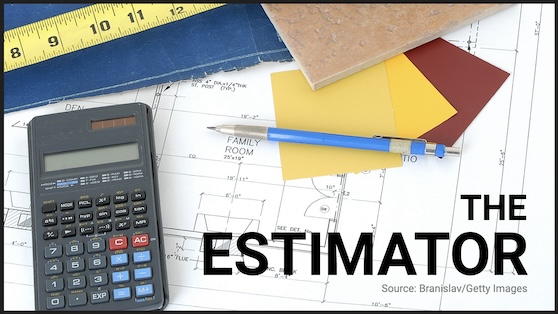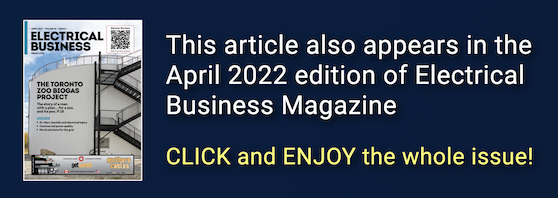
Articles
Features
Articles
The Estimator
5 common take-off mistakes – The Estimator, April 2022
April 22, 2022 | By John F. Wiesel and Dan Beresford

April 22, 2022 – Let’s tackle some all-too-common take-off mistakes.
1. Not reading the specs and drawings
When you read the specs, you are able to see the full scope of the job. That’s where you will find details on mechanical, plumbing, construction, finishing, electrical, and more. Meantime, a drawing may refer you to a section of the specs that could have an impact on your electrical work.
Sadly, one of the most common mistakes is not reading the specs and drawings before preparing the estimate. Do this before you start. You may discover you are missing drawings, schedules or addendums. And, if something is unclear, you can send out an RFI right away rather than at the last minute.
2. Not being prepared
Once you’ve finished reading everything, it’s time to start the take-off. Gather your tools. Make copies of the drawings and specs so you can mark them up as needed. You will need a scale, calculator, pencil, coloured pencils or highlighters, note paper, take-off sheets—and a folder in which to keep everything. By being organized, you greatly reduce the chance of missing something.
3. Not marking up your notes and drawings, and missing materials
It is important to highlight items as you take them off your equipment and material estimate. A set of drawings used for a take-off should be full of colour and highlighted items. Experience has shown that estimates become more accurate when you mark each item and circuit as it is measured or counted.
Make note of items for which you will need more information. If you miss something, who will pay for the material and the labour? That’s right… you.
4. Deliberately omitting material or labour
Doing this in the hopes “making it up” in change orders after winning the bid is a high-risk, low-reward strategy. Change orders are not automatically approved; upon review, if the additional cost is not what the client expected, it will be declined.
5. Substituting materials or using alternates
Sometimes it’s hard to get the exact material requested in the drawings or specs; or maybe a material is over-specified, surpassing CE Code requirements. We’ve all been there! However, submitting a bid that includes unapproved materials or alternates can result in not getting the bid, damage to your reputation, replacing the substitute or alternate at your expense, or even a lawsuit.
Also check out our session Estimating Hacks: Tips & Tricks for Success from EBPowerCon 2022 (below).
John F. Wiesel is the president of Suderman Estimating Systems Inc., and has been estimating and teaching estimating since the early 1980s. Dan Beresford served as an electrician in the Canadian Navy, then worked in various roles in the electrical sector before joining Suderman.
You’ll find all our Back Issues in the Digital Archive.
Print this page
